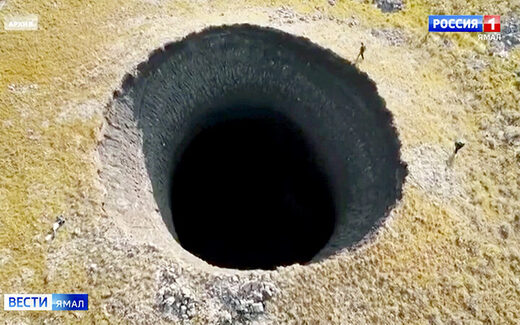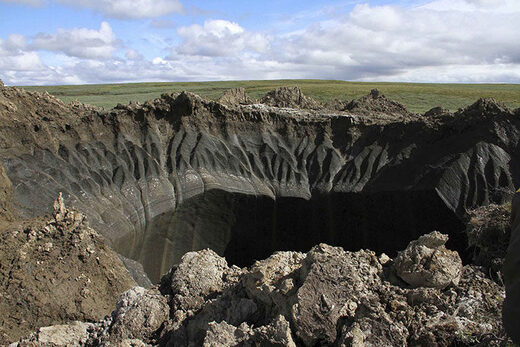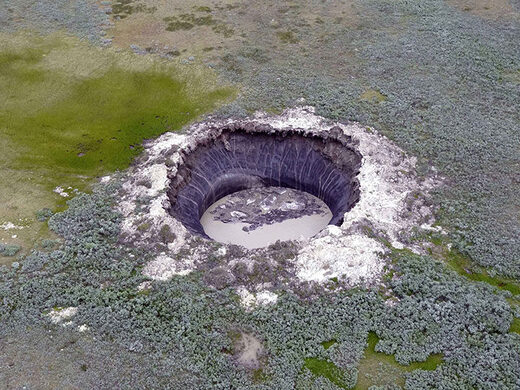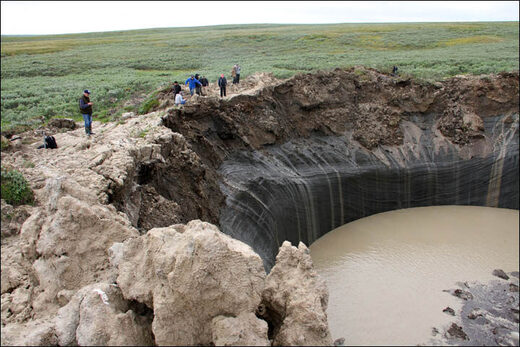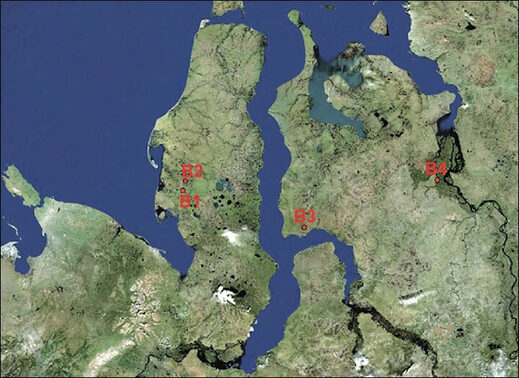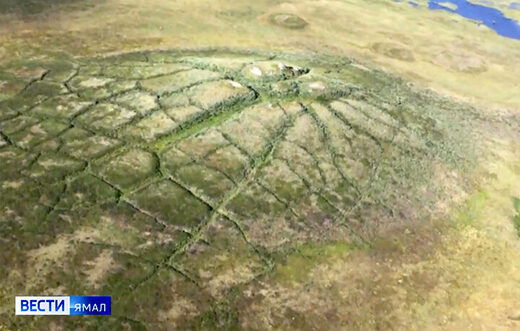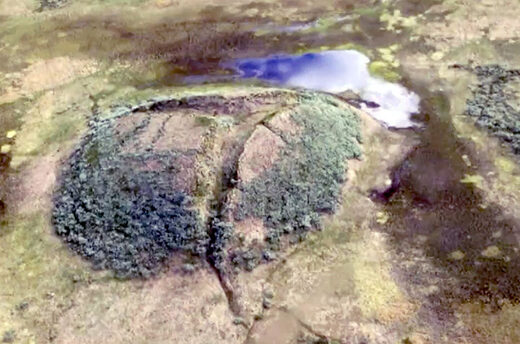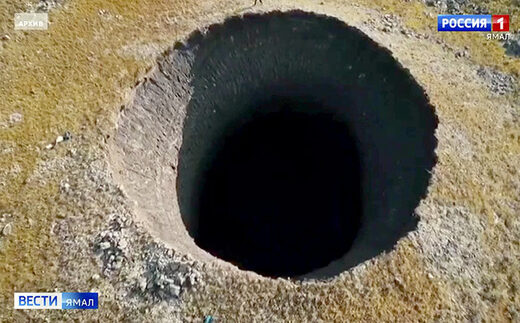Apparently new info on the craters and their formation in Siberia - i've searched and can't see it posted here or on sott:
http://siberiantimes.com/science/casestudy/news/n0676-big-bang-formed-crater-causing-glow-in-sky-explosion-was-heard-100-km-away/ said:Big bang formed crater causing 'glow in sky': explosion was heard 100 km away
By The Siberian Times reporter
07 June 2016
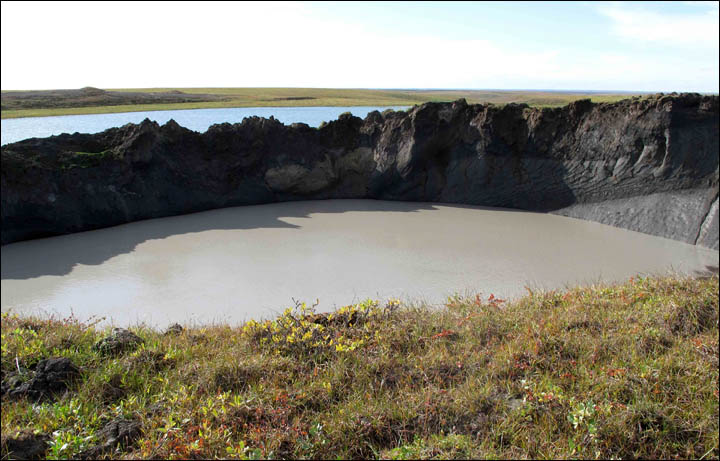
Startling new details emerge of the most mysterious of Siberia's newly created giant permafrost holes.
Since the crater was formed in a 2013 blowout, the crater's size rapidly increased at least 15 times during the next year and a half. Picture: Vladimir Epifanov
First accounts of the gaping fissure in the earth - found by reindeer herders, who were almost swallowed up by the crater - reported that it was around 4 metres in width and 'about 100 metres' deep.
Scattered over a radius of one kilometre were lumps of displaced soil, sand and ice which had erupted from the earth.
Now we can reveal significant new details about this remote crater on the Taimyr peninsula in Krasnoyarsk region, some 440 kilometres from dozens of other newly-formed giant holes.
Firstly, respected scientist Dr Vladimir Epifanov, the sole leading expert to so far visit the site, said: 'There is verbal information that residents of nearby villages - at a distance of 70-100 km - heard a sound like an explosion, and one of them watched a clear glow in the sky. It was about one month after the Chelyabinsk meteorite.'
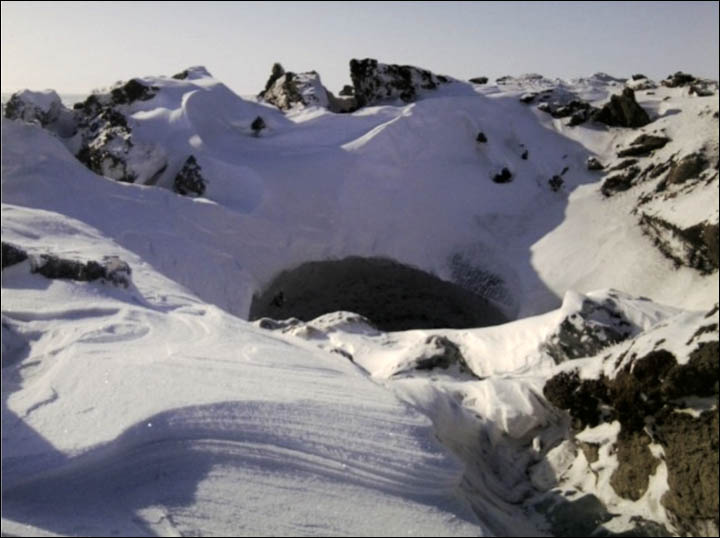
Taimyr crater in March 2013
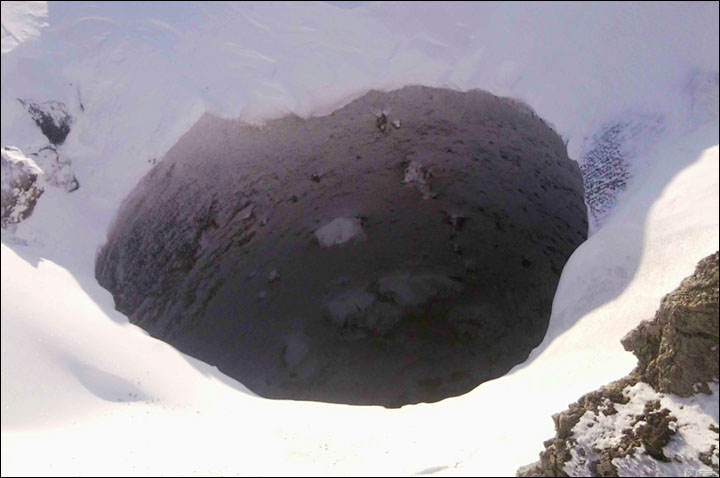
Taimyr crater in March 2013
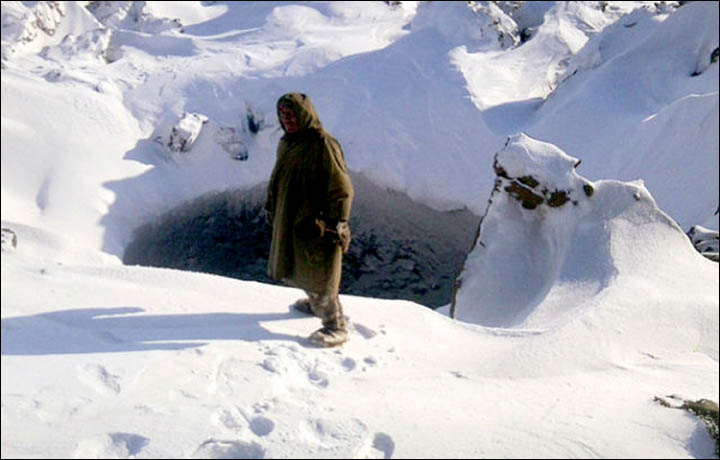
Taimyr crater in March 2013
First accounts of the gaping fissure in the earth - found by reindeer herders - reported that it was around 4 metres in width and 'about 100 metres' deep. Pictures: Sergei Lapsui and Stanislav Yaptune
Locals wrongly suspected it was another exploding space object falling from the sky, it is believed. This is the first known account of the explosive sound, and a bright light in the sky for which - as yet - there seems no explanation.
Secondly, since the crater was formed in a 2013 blowout, the crater's size rapidly increased at least 15 times during the next year and a half, according to previously unreported scientific data.
It is expected to be even wider now but no recent scientific surveys have been made to the remote site.
Our pictures show the so-called Deryabinsky crevice in snow soon after it was formed, when the hole was some four metres in width, and the latest known pictures which illustrate how it is now a lake, some 70 metres in diameter.
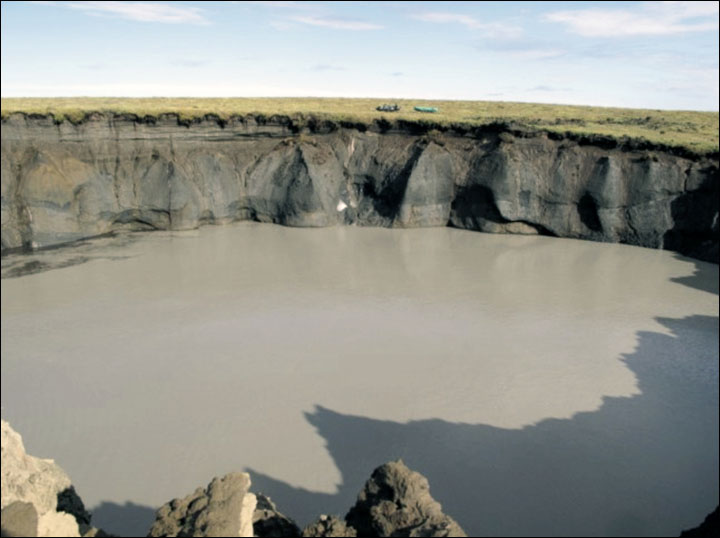
Taimyr crater in Autumn 2014
The height of the northern wall from the water level was measured as six metres, and the water depth 12 metres. The southern wall 10 metres in height, and the depth 18 metres: but it was not possible to measure the deepest point. Picture: Vladimir Epifanov
Thirdly, so rapidly is the landscape around the crater changing that experts predict the walls of the crater lake will soon collapse it will merge with a nearby long-established lake.
Whatever the original cause of the explosion heard over a vast area, the collapse is seen as being due to melting permafrost, and the walls of the crater caving in.
The height of the northern wall from the water level was measured as six metres, and the water depth 12 metres. The southern wall 10 metres in height, and the depth 18 metres: but it was not possible to measure the deepest point. As previously stated, the original hole was estimated as 100 metres deep.
Russia is monitoring by satellite the sites of potential new eruptions across huge swathes of the permafrost north of Siberia, amid suspicions that climate change has stoked a new natural phenomenon.
When this Taimyr hole first appeared, and many more in Yamal peninsula, known to locals as 'the end of the world', there were varied claims as to the cause: theories ranged from meteorites, to stray missiles, and a manmade prank to outlandish claims that this was the work of aliens.
Dr Vladimir Epifanov
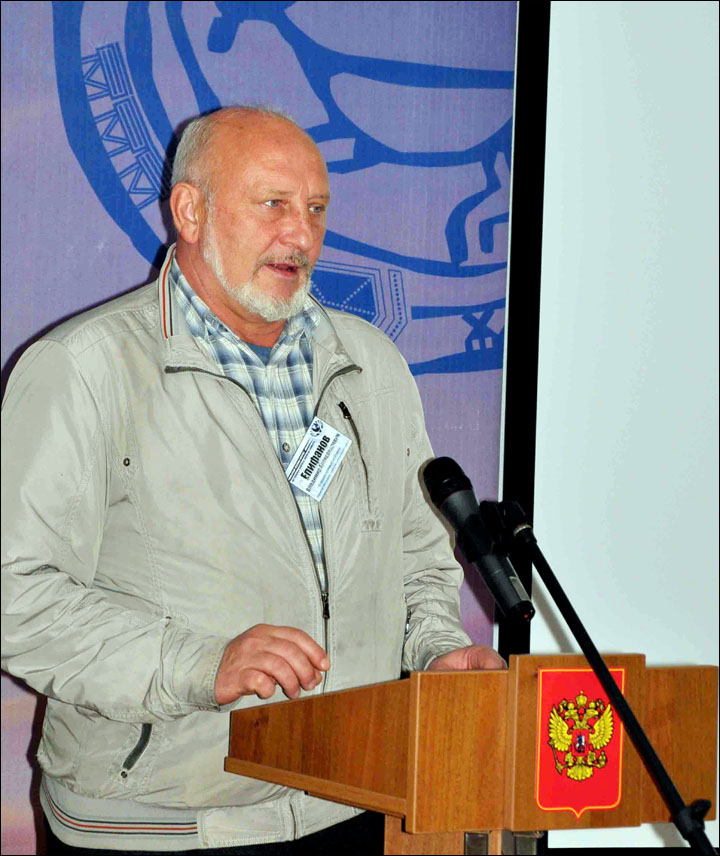
Novosibirsk scientist Dr Vladimir Epifanov is the sole leading expert to so far visit the site. Picture: Taimyr Museum of Local Lore
There was also the theory that the trigger was an explosive cocktail of methane or other underground gas. One account when it the Taimyr hole first appeared stated: 'It is not like the work of men, but it also doesn't look like natural formation.'
Scientists now appear to agree that other recently-formed Siberian holes were caused by climate warming releasing previously frozen gases, but there is a claim that a different process is at work in the Taimyr crater.
On the Yamal peninsula, the main theory is that the craters were formed by pingos - dome-shaped mounds over a core of ice - erupting under pressure of methane gas released by thawing of permafrost caused by warming temperatures.
Pictures highlighted by The Siberian Times in recent years show this dramatic new permafrost phenomenon on land, but it is also clear that underwater mounds in the Kara Sea are leaking methane gas with potentially hazardous consequences for energy exploration in the area.
One theory is that huge and sudden methane releases from these leaking sea-floor hillocks cause the phenomenon known as the Bermuda Triangle which has led to shipping and air tragedies in the Altantic.
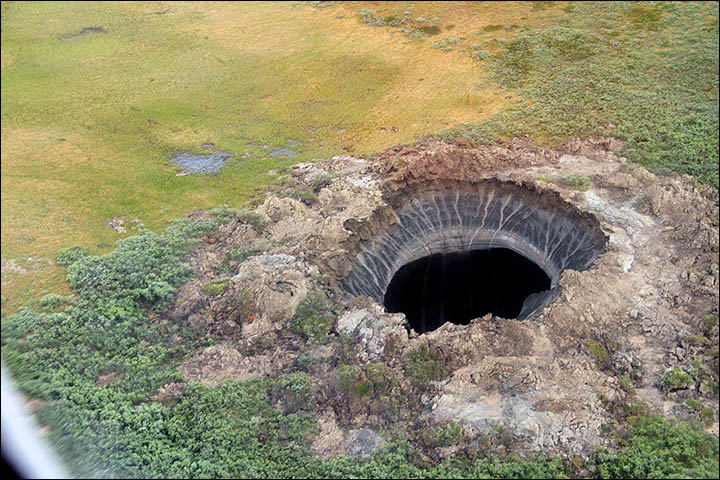
First pictures from inside the 'crater at the end of the world'
Exclusive new pictures INSIDE mystery Siberian crater
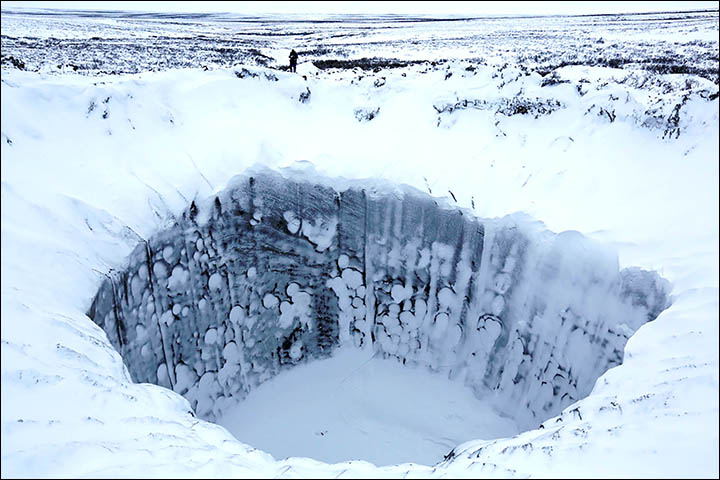
Solved? How scineitsts say mystery craters were formed in northern Siberia
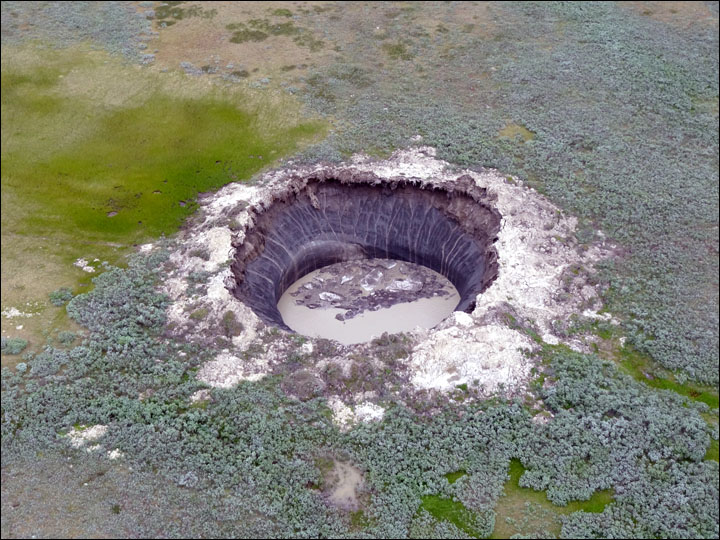
Startling changes revealed in mystery craters in northern Siberia
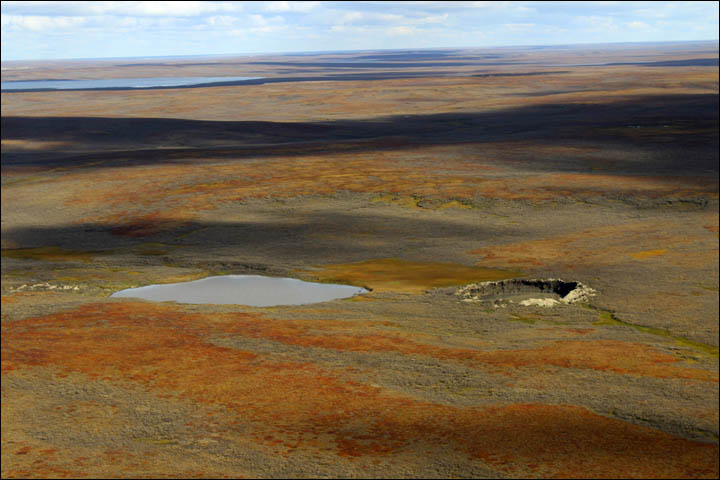
Yamal hole
How did the famous Yamal crater change from July 2014 to September 2015. Pictures: Yamalo-Nenets Autonomous region governor's press-service, Vasily Bogoyavlensky, Vladimir Pushkarev Picture: Yamalo-Nenets Autonomous region governor's press-service
Land-based Yamal craters were previously pingos, or mounds with an ice core common in Arctic and sub-Arctic regions, says leading authority Professor Vasily Bogoyavlensky.
Warming over a number of years caused melting and the vacant space inside the ice humps was filled with natural gas, mainly methane, which eventually triggered eruptions, he believes.
Dr Epifanov has a different explanation for the Taimyr eruption, suggesting it originated at a depth that means it could not be linked directly to climate change, namely the degradation of gas hydrates some 500 metres below the surface, releasing methane which accumulated at a depth of 100 metres.
He sees the process of degassation as being normal in permafrost regions.
Dr Epifanov is from the Siberian Research Institute of Geology, Geophysics and Mineral Resources, in Novosibirsk.
The Siberian Times thanks Larisa Stryuchkova and 'Neizvestny Norilsk' ('Unknown Norilsk') Magazine for the reports and images.

